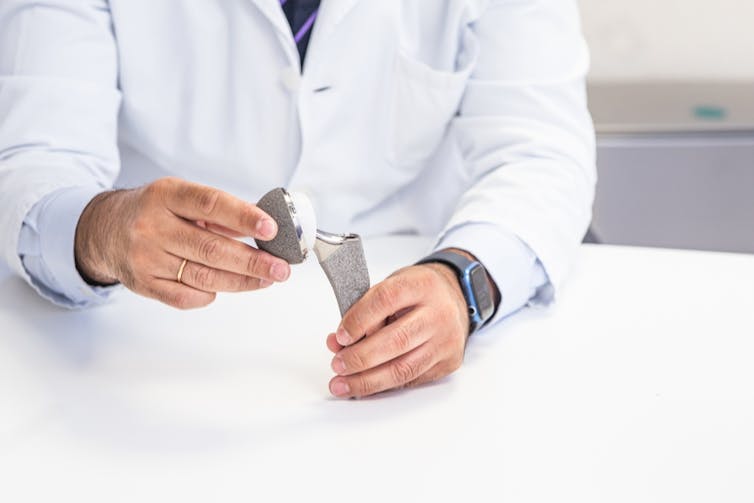Imagine waking up from surgery to discover that the implants designed to save your life were too large, too rigid, and never meant for someone like you. Imagine arriving at the emergency department with chest pain, only to be sent home because your symptoms don’t match the “classic” heart attack signs taught to doctors.
Picture taking a routine dose of medication and experiencing severe side-effects, only to learn that the drug was never tested on women during its clinical trials. Or recovering from a fracture, only to find that the rehabilitation plan you’re following doesn’t align with how your bones heal.
This isn’t the story of a medical mishap. It’s the consequence of centuries of anatomical science using one model for every body: the male.
From textbooks to medical devices, the female form has often been an afterthought, leading to treatments that don’t fit, symptoms that go unnoticed, and lives put at risk. How did anatomical science come to overlook half the population? And what are the consequences of this oversight today?
Get your news from actual experts, straight to your inbox. Sign up to our daily newsletter to receive all The Conversation UK’s latest coverage of news and research, from politics and business to the arts and sciences.
To understand how this situation came about, we must go back to the roots of modern anatomy.
Early anatomical texts, such as those by Andreas Vesalius in the 16th century, were based almost exclusively on male bodies. Female anatomy was included only when it differed in obvious reproductive ways, often cloaked in language that presented the female form as a deviation or inversion of the male norm.
By the 19th century, with the institutionalisation of medical schools and dissection, anatomical teaching still relied predominantly on male cadavers. This wasn’t simply due to availability. It was also cultural.
The male body was perceived as universal, rational, and worthy of study, while the female body was seen as variable, emotional, and biologically preoccupied with reproduction. The “ideal body”, in anatomical terms, was male.
Even when women were studied, it was often through a lens of pathology or deviation: hysteria, wandering wombs, and fragile constitutions – the femme fragile.
This historical lens cast a long shadow: well into the 20th century, and in many respects still today, anatomical models, surgical techniques, and medical training continue to prioritise the male form.
When ‘normal’ doesn’t fit
The implications of this anatomical bias are not just theoretical. They affect everyday clinical practice and outcomes. For example, women experiencing heart attacks often report symptoms like fatigue, nausea, or jaw pain – symptoms not listed in the “typical” presentation historically taught to doctors. As a result, they are more likely to be misdiagnosed or dismissed, leading to higher mortality rates.
Read more: Are heart attack symptoms sexist?
Orthopaedic implants, such as hip and knee replacements, have also been shown to potentially underperform in women, in part because they were designed around male bone dimensions and joint angles.
Even crash test dummies – the silent arbiters of car safety design – were based on male physiology until disturbingly recently. When a “female” dummy was finally introduced, it was essentially a scaled-down man, not a biologically accurate model. Women’s bodies are still not standard or required in car safety tests.
Then there’s the world of pharmaceuticals. Until the early 1990s, women were routinely excluded from clinical trials due to concerns about hormonal fluctuations and potential pregnancy risks. As a result, the dosage, metabolism, and side-effect profiles of countless medications were understood only in male bodies – sometimes with dangerous consequences.
In 2013, the US Food and Drug Administration halved the recommended dose of the sleep aid zolpidem (Ambien) for women after discovering that they were far more affected by it than men. Something that could have been predicted had women been included in the initial studies.

Anatomy and inclusion
Bones, muscles, blood vessels, fat distribution, and even immune responses vary between sexes. Female skeletons are generally lighter, with different angles in the pelvis and knees. Tendons and ligaments respond differently to stress and hormones, affecting injury risk and recovery.
Pain perception and response to analgesics differ, too. Not just because of socialisation, but because of real, measurable differences in anatomy and neurobiology.
Anatomical diagrams in textbooks still depict male figures as standard, with female anatomy relegated to the reproductive chapter.
Simulation models for surgical training rarely reflect the full range of female body types or internal variation. If the first step of medicine is to know the body, we must ask: whose body are we really teaching?
Change is coming. More researchers are calling for sex-disaggregated data in studies, and journals increasingly require it
New generations of anatomists, doctors, and designers are beginning to challenge the one-body-fits-all paradigm. We’re finally starting to build a model of medicine that sees all bodies clearly, from the inside out.
Michelle Spear does not work for, consult, own shares in or receive funding from any company or organisation that would benefit from this article, and has disclosed no relevant affiliations beyond their academic appointment.
This article was originally published on The Conversation. Read the original article.







